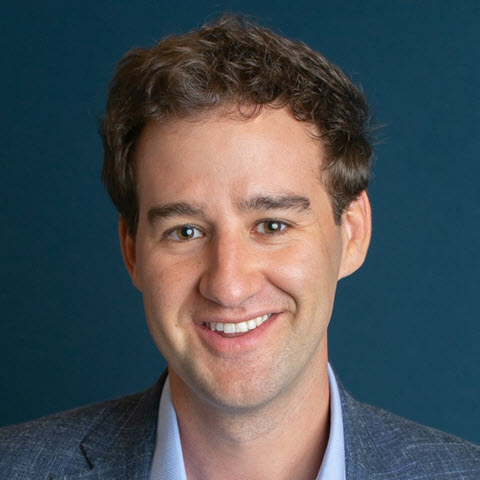Coming out of the COVID economy and into an inflationary one has left a lot of utilities with a lot of debt as many low- and moderate-income (LMI) customers have struggled to keep up to date with payments. Managing arrears while maintaining flexibility for struggling customers is a balancing act for utilities with no universal recipe.
Fortunately, utilities all over the US and Canada have used many methods to managing arrears. Here are five creative approaches to payment assistance programs that utilities have been offering to help customers in arrears.
Pick-your-due-date programs
A pick-your-due-date program can be an effective way to enhance customers’ billing experience. It allows customers to choose their preferred payment due dates, offering flexibility and control over their finances.
By actively listening to customers (especially younger customers and those with online accounts) and relaxing enrollment criteria, some utilities have found success with this type of program. Promoting the program prominently on the website and via social media as well as emphasizing its benefits can help encourage participation.
Crowdfunding programs
Crowdfunding, donation, and round-up programs collect donations for bill assistance, energy-efficient repairs, and weatherization through bill round-ups or donations. Some successful programs that follow this model include the following.
Xcel Energy’s Energy Assistance Charge. The Energy Assistance Charge (PDF) supports programs managed by Energy Outreach Colorado (EOC) and the Colorado Energy Office that provide bill payment assistance, weatherization assistance, and energy efficiency programs to income-qualified households. Xcel Energy’s Pay It Forward Program allows residential demand response participants to donate their rebates directly to EOC.
MidAmerican Energy’s I CARE program. The I CARE program funds local assistance for heating bills and home weatherization for income-eligible residents and is administered through local community action agencies. I CARE is funded by customer donations and a 25% match from MidAmerican Energy. The utility’s customers can make tax-deductible donations via a checkbox on their monthly bill, a pledge online, or an anonymous payment.
Idaho Power’s Project Share program. Project Share, administered by the Salvation Army, provides up to $300 annually per household to help income-eligible customers pay utility reconnection fees, fund home equipment repairs, and supplement electric and gas bill payments.
Budget billing and prepay programs
Budget billing programs (also called equalized billing, equal payment plan, levelized billing, level pay, average monthly payment, budget plan, balanced billing, or comfort-level billing) offer customers a way to manage their utility bills more effectively, leading to higher satisfaction compared to standard billing. Utilities can enhance this program by allowing customers with outstanding debts to participate or by integrating it with arrears management.
Similarly, customers enrolled in prepay tend to express higher satisfaction levels than their standard-billing peers. Customers appreciate the predictability of their energy bills and the increased control over their budgets and energy usage that prepayment offers. Several utilities report that their prepay programs have resulted in energy savings ranging from 5% to 14% per household.
Check out the on-demand webinar, Using behavioral strategies to improve prepay and demand-side management utilities to hear about utilities' experiences using behavior science to improve prepay offerings and DSM programs in general.
Percentage-of-income payment plans
A percentage-of-income payment plan (PIPP)—also known as a guarantee of service plan—is structured to make sure that enrolled customers pay no more than 6% of their monthly income toward energy bills (based on the energy burden threshold). If the bill exceeds this amount, the difference is covered by either the state or an agency, typically through grant funds.
This program is popular among LMI customers, seniors, budget-conscious individuals, and households with large arrearages. While a PIPP is typically a 12-month plan, some utilities offer extensions.
Arrearage and debt forgiveness are crucial components for the success of a PIPP, with some utilities providing up to $2,000 in forgiveness. These measures help make the program more effective in assisting customers with managing their energy costs and maintaining consistent bill payments.
Learn about National Grid Massachusetts and SoCalGas's arrears management programs (AMPs) in the report, A look at two utilities’ debt-forgiveness programs. National Grid has been offering its AMP since the 1990s while SoCalGas implemented its AMP in 2021.
Bill discount rates
Twenty US states currently use or allow bill discount rates (often referred to as a universal service plan). These include:
- Fixed billing credits
- Fixed percentage discounts
- Billing caps based on a percentage of the customer’s income
Programs typically limit eligibility to households with an income below a certain threshold (for example, a percentage of the federal poverty level or the state’s median income) and may require customers to meet other criteria, such as receiving benefits from other programs.
In some cases, applying to their local Low Income Home Energy Assistance Program allows customers to automatically apply for a universal service plan if their utility offers one.
If you’re interested in learning more, check out our on-demand webinar Creative approaches to utility payment assistance programs. Read the Electricity Journal article Utility assistance and pricing structures for energy impoverished households: A review of the literature. And see Connecticut’s Utility Rate Discounts for Low-Income Customers in Other States (PDF).


